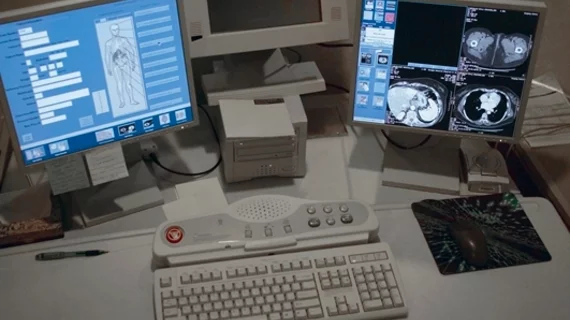Simple automated protocol halves radiology workstations' energy consumption
Simply powering down radiologists’ workstations outside of working hours can significantly reduce a department’s carbon footprint.
By shutting down computer workstations during night and weekend hours, energy consumption owed to radiologists specifically can be nearly halved, according to a new analysis Clinical Radiology.
The medical field’s role in climate change has been a hot topic in recent years. Numerous physician leaders and organizations have called for action in addressing healthcare’s hefty carbon footprint, especially within radiology departments, which account for a substantial portion of healthcare facilities’ energy consumption.
Although much of the energy consumed by imaging departments is unavoidable—it takes a significant amount to run equipment in general—authors of new paper propose that small, seemingly insignificant changes like powering down workstations at night could be an effective means of reducing radiology’s carbon footprint.
“Previous studies have shown that radiology department energy use represents a substantial proportion of total hospital energy consumption, and therefore associated carbon emissions, the bulk of which is attributable to heating, ventilation and cooling, and scanner power use,” corresponding author Huw Walters, with the Department of Radiology at Nuffield Orthopaedic Center of Oxford University NHS Foundation Trust, in the U.K., and colleagues explained. “However, radiology workstations are another energy hungry device which, while drawing less power than a CT or MRI scanner, are far more numerous within departments. Reducing the energy use of reporting workstations therefore may represent an avenue for reducing the emissions from [a] radiology department.”
The group acknowledged that there are already settings, such as idle mode, in place to reduce energy consumption. However, often these settings require human interaction and can be easily overlooked. An automated protocol that does not require a human to initiate would likely be more effective, the team suggested.
To get a better idea of how this sort of protocol would affect both energy and cost savings, researchers analyzed data on power usage, CO2 emissions and the associated energy costs before and after implementing an automatic shutdown procedure for 88 reporting workstations. Computers at the workstations were set to automatically turn on at 6 a.m. and power off at 7:30 p.m. Monday through Friday, remaining off throughout the weekend when radiologists were not on-site.
In doing this, the average weekly workstation on-time was nearly cut in half, dropping from 148 to 75.5 hours. This resulted in annual energy savings of 17 megawatt hours, or the equivalent of 3.4 tons of CO2 emissions.
Annual cost savings were meager, at around $5,400 USD, though the team suggested that widespread enactment of similar protocols would have a more considerable financial impact.
“While savings are modest compared to HVAC and scanner emissions, the protocol's simplicity and effectiveness in addressing human factors in power management highlight its potential. Broader application across hospital networks could yield substantial environmental and financial benefits,” the group wrote, adding that the protocol is a simple and feasible measure that contributes to the goal of greater sustainability in radiology.

